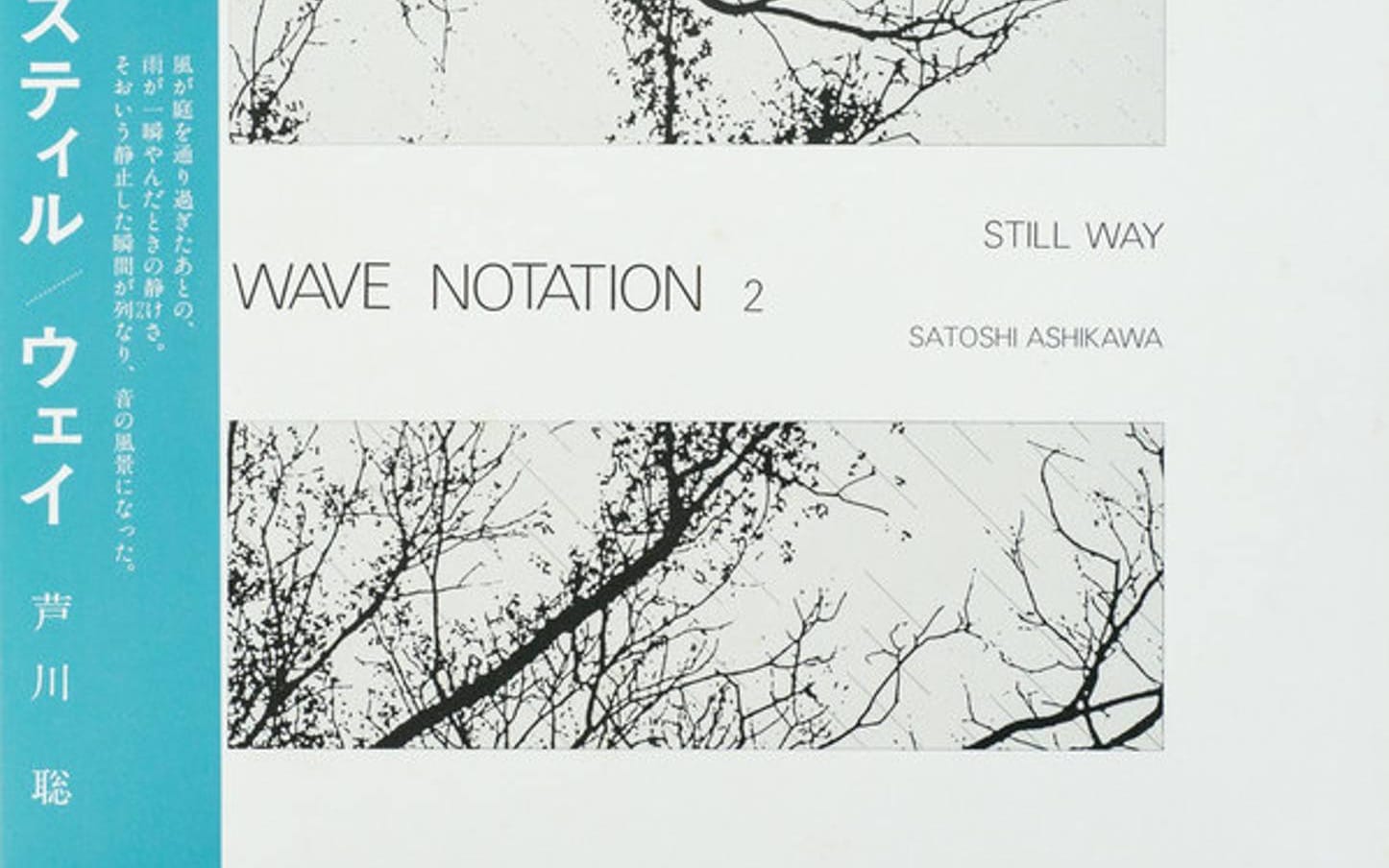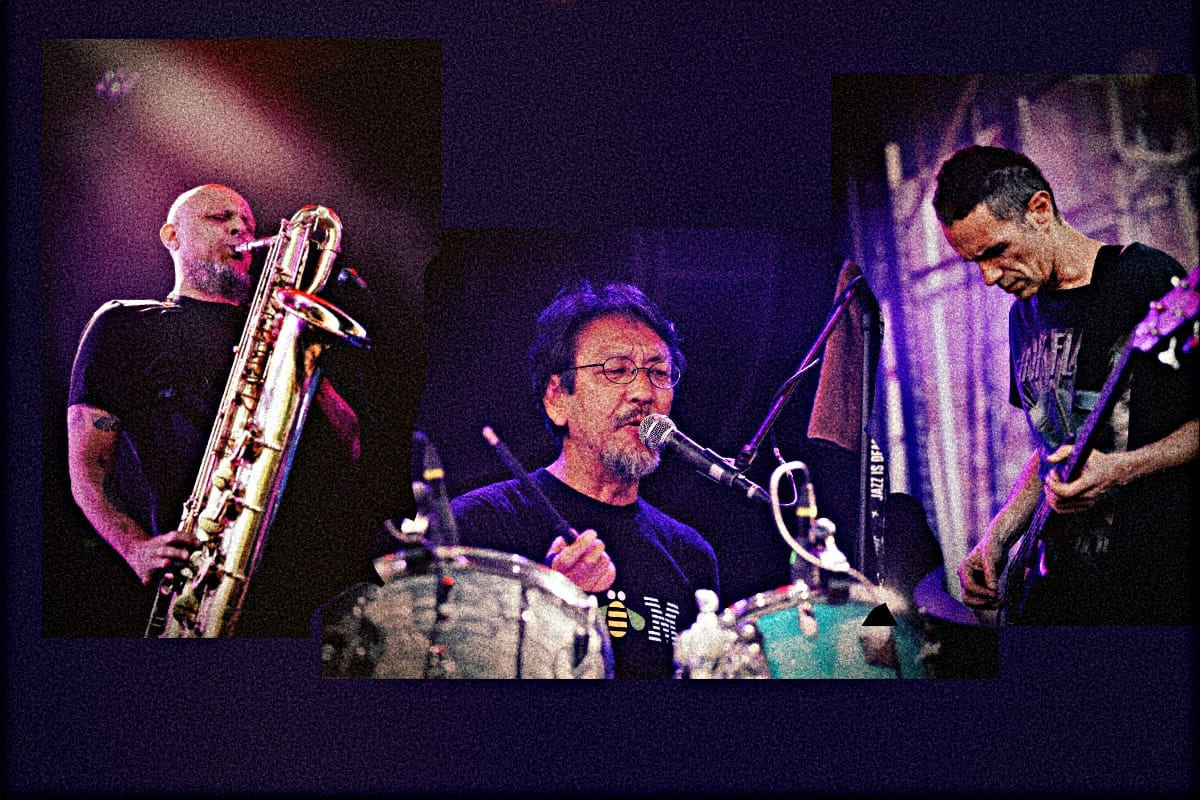In adapting writing for this column from my blog, I've focused the Spotlight On albums that I both had already written about at length, and was excited to revisit in a new context. At the start of this process, I sort of figured most of what I'd written for last year's 2022-in-review 100 Albums post met those (pretty easy) criteria. There had to be at least enough winners to last until the next 100 Albums post at the end of the year.
As it turns out,Vaults Of Eternity, um, was the last of the good ones. Most of what's left to work with barely cracks Tweet length, seriously. The quality of the 100 Albums post was...greatly exaggerated to the Spotlight OnShareholders.


So, from here on out, expect newer, wackier, stuff from the column, increasingly spontaneous and made up as we go. I'm talking full on crate-digging weirdness. I think the most valuable of what I've written so far's been artist-specific tangents about which I'm uniquely curious, and less professionally evaluated reviews, at which I do not necessarily excel. Maybe I just distract too easily. On that note, let's give Satoshi Ashikawa's Still Way (Wave Notation 2) a listen.
Still Way was released through Ashikawa's own Sound Process label in 1982, following Hiroshi Yoshimura's legacy-launching Music For Nine Post Cardsearlier that year. The third-of-a-kind piano collection Erik Satie (France 1866 - 1925) by Satsuki Shibano closed out the Wave Notation series in 1984. I find the Wave Notation records so interesting, because of the cross-section of deeply chill Japanese ambient they encompass. This kind of music gets streams in 2023, but was bound to lost CDs and relegated to cultural background noise for most of the past 40 years. The boring kind, not the cool new age kind. Satoshi Ashikawa died in 1983 at age 30, before 90% of his audience was born, as seems to be the fate of many in his field. Cancer got Hiroshi Yoshimura in 2003. Satsuki Shibano seems to be alive and kicking, at least based on what little information's available about him online.

Today's post wasn't very sound-focused, and now that you bring it up, I'm not really sure what to say about Still Way that couldn't be gleaned from its first thirty seconds of runtime. There's a clarity and a delicacy (in both senses of the word) to this music shared by a good cup of tea in a nice piece of china. It's almost nothing, but if you're into it you'll sink into the lucidity of the experience and make it last. I don't really know what I'm talking about anymore, but I'm glad there's still people working to keep it all relevant for screenagers like me. Hopefully I was able to contribute. See you next week for something wildly different.

Go deeper still:
A primer on Japanese Ambient via the record collection of Ricks Ang
To Remain in a Meadow With Hiroshi Yoshimura
Japan photo from blogtrotta80s.blogpost.com
###
FAQs About This Article
wherein Anthropic's Claude AI reads the article and suggests a few questions that remain unanswered...
Q: What are the defining characteristics of Japanese ambient music?
A: Some of the defining characteristics of Japanese ambient music include:
- Minimalism and simplicity: Japanese ambient often features sparse, uncluttered arrangements that create a sense of space and tranquility. Compositions tend to be built around a few carefully chosen elements, such as gentle melodies, subtle textures, or atmospheric sounds.
- Nature-inspired soundscapes: Many Japanese ambient artists draw inspiration from the natural world, incorporating field recordings, environmental sounds, or evocative tones that conjure images of landscapes, seasons, or natural phenomena. This connection to nature contributes to the music's calming and immersive qualities.
- Emphasis on texture and timbre: In Japanese ambient, the quality and character of individual sounds are often as important as the notes themselves. Artists may experiment with unconventional instrumentation, electronic processing, or recording techniques to create distinctive and evocative tonal palettes.
- Contemplative and introspective moods: Japanese ambient music often aims to create a meditative, introspective atmosphere that encourages listeners to turn inward and reflect. The slow-paced, evolving compositions can induce a sense of calm, focus, or emotional resonance.
- Cultural and aesthetic influences: Japanese ambient artists may incorporate elements of traditional Japanese music, such as pentatonic scales, koto or shakuhachi sounds, or zen-influenced aesthetics. These cultural touchstones can lend a distinctive sense of place and identity to the music.
However, it's important to note that these characteristics are not universally applicable to all Japanese ambient music, and individual artists may approach the genre in diverse and innovative ways. The term "Japanese ambient" itself is somewhat broad and can encompass a range of styles and influences.
Q: How did the early deaths of Satoshi Ashikawa and Hiroshi Yoshimura impact the recognition and appreciation of their work during their lifetimes, and what factors have contributed to the resurgence of interest in their music in recent years?
A: The early deaths of Satoshi Ashikawa and Hiroshi Yoshimura likely had a significant impact on the recognition and appreciation of their work during their lifetimes. Ashikawa's death at age 30 in 1983, just a year after the release of "Still Way," cut short his career and potential contributions to the genre. Similarly, Yoshimura's passing in 2003 at age 65 ended his active involvement in music-making and promotion.
Their untimely deaths may have limited the exposure and influence of their music in the short term, as they were no longer present to champion their own work or develop their artistic visions further. The niche nature of ambient music in Japan during the 1980s and 1990s, combined with the limited distribution and promotion of their recordings, could have also contributed to their relative obscurity during this period.
However, several factors have likely contributed to the resurgence of interest in Ashikawa and Yoshimura's music in recent years:
1. Reissues and compilations: The re-release of their albums by labels such as Light In The Attic and Empire of Signs has made their music more accessible to a new generation of listeners. Compilations like "Kankyō Ongaku: Japanese Ambient, Environmental & New Age Music 1980-1990" have also helped to contextualize their work within the broader history of Japanese ambient music.
2. Online music communities: The growth of online platforms like Bandcamp, SoundCloud, and YouTube has allowed fans and curators to share, discuss, and promote lesser-known artists and genres. Enthusiasts of Japanese ambient music have used these tools to create a global community of listeners and to raise awareness of key figures like Ashikawa and Yoshimura.
3. Changing musical tastes: The rise of genres like lo-fi hip hop, chillwave, and vaporwave, which often incorporate elements of vintage ambient and new age music, has primed younger audiences to appreciate the aesthetic qualities of Japanese ambient. The calming, nostalgic, and escapist appeal of these sounds has also resonated with listeners seeking respite from the stresses of modern life.
4. Critical re-evaluation: Music journalists and scholars have played a role in reassessing the historical significance and artistic merits of Japanese ambient music. By situating Ashikawa and Yoshimura's work within a broader cultural and musical context, they have helped to legitimize and elevate their contributions.
While the early deaths of Ashikawa and Yoshimura may have initially hindered the recognition of their music, the confluence of these factors has led to a renewed appreciation and popularity of their work in the 21st century. Their legacies now serve as a testament to the enduring power and appeal of their artistry.
Q: What role have modern platforms, such as streaming services and online music communities, played in the rediscovery and reappraisal of Wave Notation albums and the Japanese ambient genre as a whole?
A:
Modern platforms like streaming services and online music communities have played a crucial role in the rediscovery and reappraisal of the Wave Notation albums and Japanese ambient music as a whole.
1. Accessibility and exposure: Streaming services such as Spotify, Apple Music, and Bandcamp have made it easier for listeners to discover and access obscure and niche genres like Japanese ambient. By including these albums in their catalogs and recommending them to users based on listening habits, these platforms have exposed a wider audience to the Wave Notation series and other seminal works of the genre.
2. Curation and promotion: Online music communities, such as forums, blogs, and social media groups, have been instrumental in curating, discussing, and promoting Japanese ambient music. Enthusiasts and experts within these communities have shared knowledge, recommendations, and personal stories, helping to create a sense of shared appreciation and enthusiasm for the genre. This has encouraged more people to explore and engage with the music.
3. Reissues and digital distribution: The availability of digital distribution channels has made it more viable for labels to reissue and remaster rare and out-of-print albums, including the Wave Notation series. This has allowed a new generation of listeners to experience these recordings in high quality and has helped to establish their canonical status within the genre.
4. Contextualization and storytelling: Online music publications and podcasts have played a role in contextualizing and narrating the history and significance of Japanese ambient music. By providing in-depth articles, interviews, and audio documentaries, these outlets have helped to illuminate the cultural and artistic context in which the Wave Notation albums were created and have argued for their enduring relevance and influence.
5. Global community building: The internet has facilitated the formation of a global community of Japanese ambient enthusiasts, connecting fans and artists across geographic and linguistic boundaries. This has fostered a sense of shared identity and purpose around the genre and has helped to sustain interest and engagement over time.
6. Algorithmic recommendations: Streaming platforms' algorithmic recommendation systems have also played a part in exposing listeners to Japanese ambient music. By analyzing user data and identifying patterns in listening behavior, these systems can suggest similar artists and albums to those who have shown an interest in the genre, thus broadening its reach and appeal.
The combination of these factors has created a virtuous cycle of rediscovery, reappraisal, and reinvention around the Wave Notation series and Japanese ambient music more broadly. As more people have discovered and championed the genre through modern platforms, it has gained greater visibility, legitimacy, and influence within the wider musical landscape. This has helped to secure its place as a vital and enduring tradition worthy of continued exploration and appreciation.







Comments